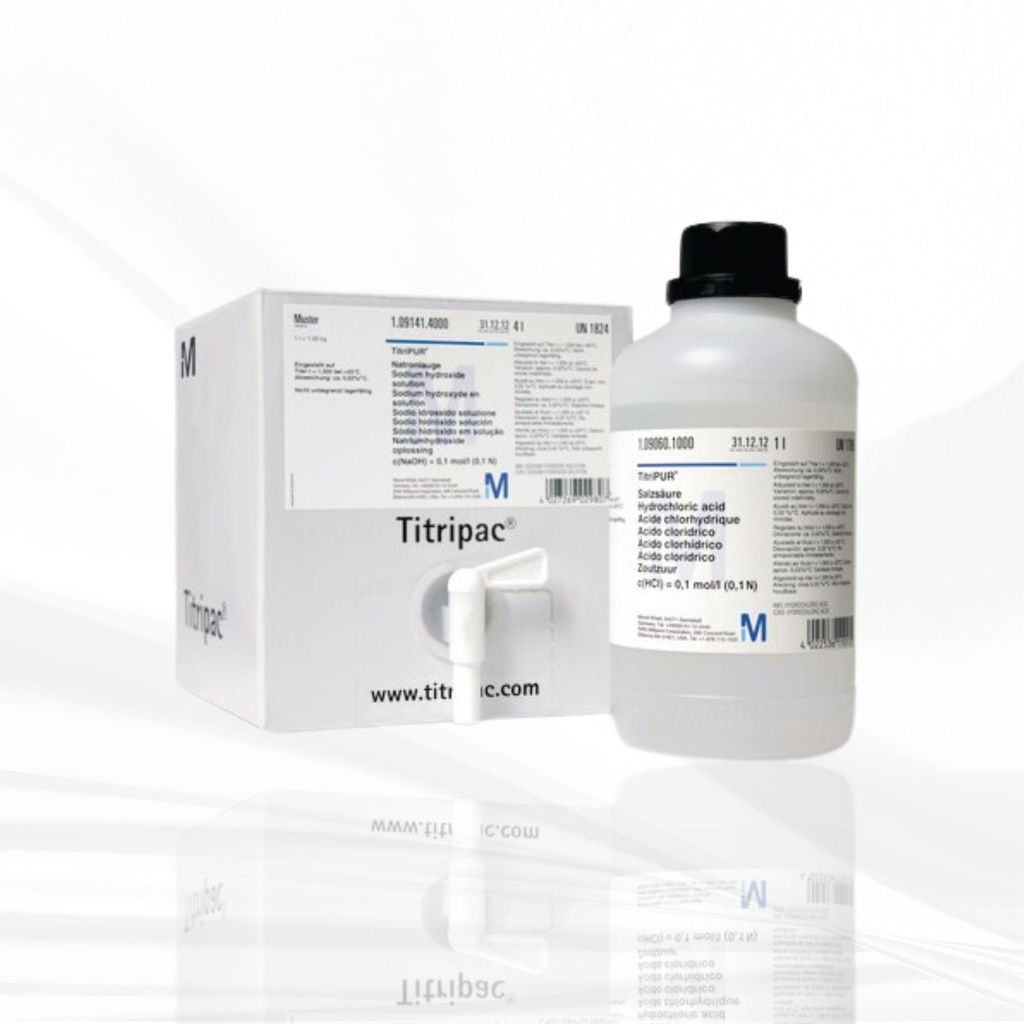Application
- Research
on the Synthesis of Zinc-Ammonium Phosphate Using Galvanic Waste Sludge as
a Source of Zinc.: This study explores the synthesis of zinc-ammonium
phosphate from galvanic waste sludge. Hydrochloric acid solution is
utilized in the extraction process, demonstrating its effectiveness in
recovering valuable metals from industrial waste (Morgovan et al., 2024).
- Corrosion
inhibition of mild steel in hydrochloric acid solution by the expired
Ampicillin drug.: This research investigates the use of expired
Ampicillin as a corrosion inhibitor for mild steel in hydrochloric acid
solutions. The study highlights a novel application for expired
pharmaceuticals in mitigating corrosion in acidic environments (Alamry et al., 2023).
- Contactless
conductivity sensor employing moist paper as absorbent for in-situ
detection of generated carbon dioxide gas.: This paper discusses a
contactless conductivity sensor for detecting CO2 gas, utilizing
hydrochloric acid solutions to generate the gas for calibration and
testing. The method offers a simple and efficient approach for
environmental monitoring (Sonsa-Ard et al., 2020).
- The
microwave induced plasma with optical emission spectrometry (MIP-OES) in
23 elements determination in geological samples.: This article details
the application of microwave-induced plasma optical emission spectrometry
for elemental analysis in geological samples. Hydrochloric acid solution
is used in the sample preparation process to ensure accurate and efficient
element extraction (Niedzielski
et al., 2015).
Features and Benefits
Accreditation:
This volumetric solution is analyzed by our calibration laboratory
D-K-15185-01-00 which is accredited according to DIN EN ISO/IEC 17025 for
analysis of amount-of-substance concentrations in volumetric solutions by DAkkS
(Deutsche Akkreditierungsstelle - German National Accreditation Body). The
accreditation certificate can be found at www.sigmaaldrich.com/ISO17025.
Packaging
SKU-pack size numbers ending with a "3" are
SmartChemicals with an RFID tag on the label for seamless data transfer to the
instrument, e.g. xxxxxx1003 or xxxxxxx 4003. More information on www.sigmaaldrich.com/SmartChemicals
Titripac® packaging - all SKU-pack size numbers ending
"4000, 4003, 9010, 9013" - more information on www.sigmaaldrich.com/Titripac
Linkage
Replaces: HX0603D; HX0603D-8
Analysis Note
Form liquid
Amount-of-substance concentration 0.995 - 1.005 mol/L
Measurement uncertainty ± 0.003 mol/L
Traceability NIST SRM
The concentration is determined by volumetric titration and refers to 20°C.
The amount-of-substance concentration of this volumetric solution is traceable
to a primary standard reference material (SRM) from the National Institute of
Standards and Technology, Gaithersburg, USA (NIST SRM 723
Tris(hydroxymethyl)aminomethane) by means of volumetric standard
Tris(hydroxymethyl)aminomethane (article number 1.02408), certified reference
material according to ISO 17034, analyzed by our accredited calibration
laboratory of Merck KGaA, Darmstadt, Germany according to DIN EN ISO/IEC 17025.
The uncertainty is expressed as expanded measurement uncertainty with a
coverage factor k=2 covering a confidence level of 95%.
Note: The titer is a correction factor to correct for variations of the
volumetric solution, the titration equipment, the temperature and other
laboratory conditions. For correct titration results it is recommended to
determine a titer with the laboratory specific equipment and under laboratory
specific conditions directly after opening a new bottle and at regular time
intervals.
Legal Information
Titripac is a registered trademark of Merck KGaA, Darmstadt,
Germany
Titripur is a registered trademark of Merck KGaA, Darmstadt,
Germany




